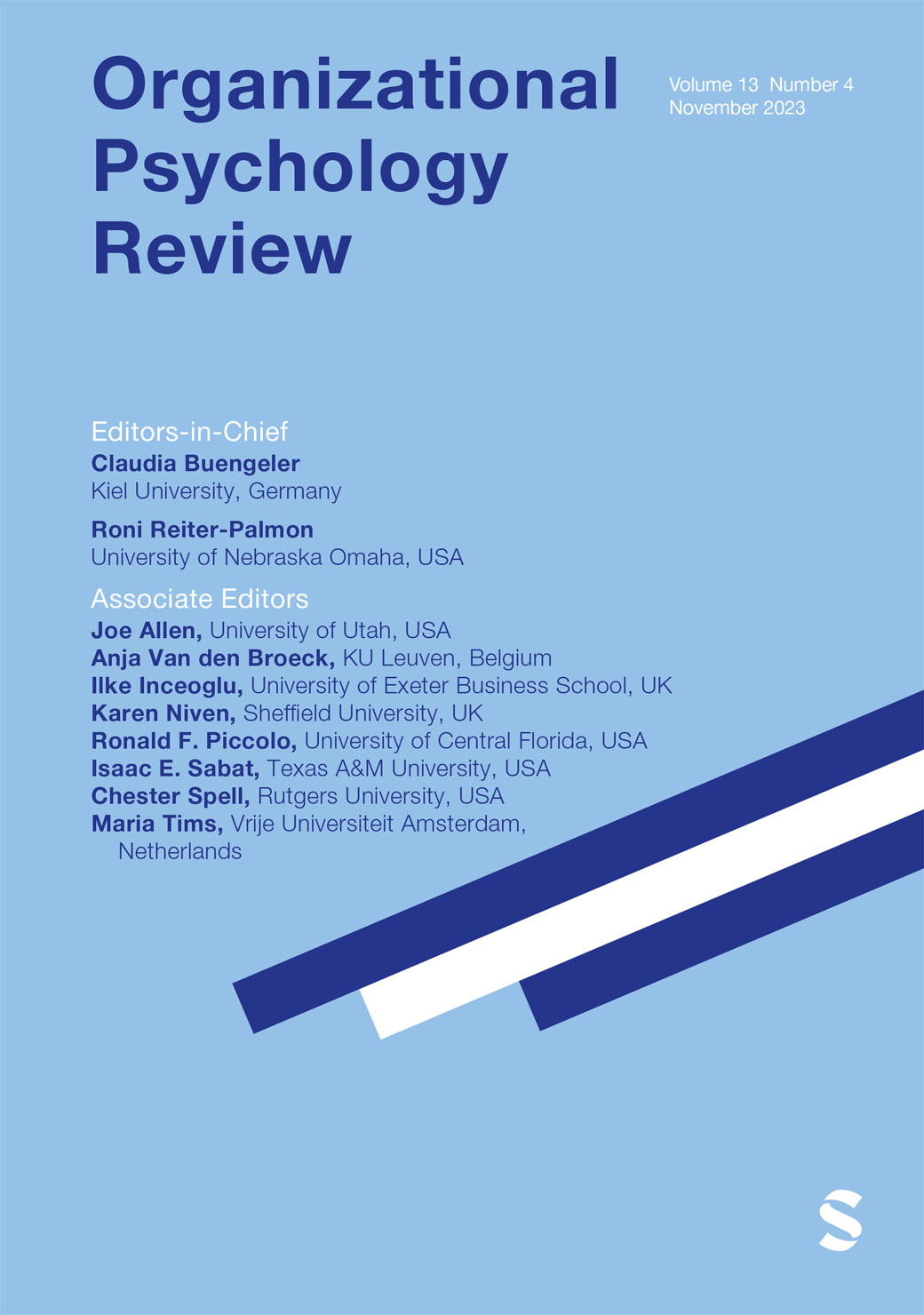The hot and the cold in destructive leadership: Modeling the role of arousal in explaining leader antecedents and follower consequences of abusive supervision versus exploitative leadership
IF 7.1
1区 心理学
Q2 MANAGEMENT
引用次数: 3
Abstract
Due to its devastating consequences, research needs to theoretically and empirically disentangle different sub-types of destructive leadership. Based on concepts derived from aggression research distinguishing re- and proactive aggression, we provide a process model differentiating abusive supervision and exploitative leadership. High versus low arousal negative affect is installed as the central mediating factor determining (1) whether perceived goal-blockage (leadership antecedents) leads to abusive supervision versus exploitative leadership and (2) whether a specific leadership behavior leads to active versus passive follower behavior (leadership consequence). Further, theoretical anchoring of individual and contextual moderators onto the model's process paths is provided and exemplary hypotheses for concrete moderation effects are deduced. Based on the provided process model, we highlight four recommendations to facilitate process-based construct differentiation in future research on destructive leadership. To precisely understand the differences and commonalities in different forms of destructive leadership will ultimately enable custom-tailored inter- and prevention. Plain Language Summary Negative leadership—also named “destructive” leadership—has very bad effects on followers and organizations. There are not just one, but many forms of destructive leadership and it is important to understand where different sub-types come from (i.e., to understand their antecedents) and which specific effect they have (i.e., to understand their consequences). In this paper, we focus on better understanding two forms of destructive leadership, namely abusive supervision and exploitative leadership. These two forms are similar to the two main forms of aggression. Abusive supervision is similar to reactive aggression, an impulsive “hot blooded” form of aggression. Exploitative leadership is similar to proactive aggression, a premeditated “cold blooded” form of aggression. We explain the parallels between the two forms of aggression and the two forms of leadership and provide a model which allows to predict when one versus the other form of leadership occurs and to which follower behavior they lead. An important factor in this model is the physiological characteristic of the emotional reaction to an event (i.e., arousal). An emotional reaction can be high in arousal; for instance, anger is a high arousal negative emotional reaction. On the contrary, boredom, for instance, is a low arousal negative emotional reaction. Dependent on whether both a leader and a follower react to a negative event (e.g., not getting what they want, being treated badly by others) with high or low arousal, their behavior will be different. We explain how this mechanism works and how it can help us to better predict leaders' and followers' behavior. We also outline how individual characteristics of the leader and follower and characteristics of their environment and context interact with arousal and their behavior.破坏性领导中的冷热:建立唤醒在解释滥用监督与剥削性领导的领导者前因和追随者后果中的作用模型
由于其破坏性后果,研究需要从理论和经验上理清破坏性领导的不同子类型。基于侵略研究中区分再侵略和主动侵略的概念,我们提供了一个区分滥用监督和剥削领导的过程模型。高唤醒与低唤醒负面影响被认为是决定(1)感知目标障碍(领导前因)是否导致滥用监督与剥削领导的中心中介因素,以及(2)特定的领导行为是否导致主动与被动追随者行为(领导后果)。此外,还提供了个体和情境调节因子在模型过程路径上的理论锚定,并推导了具体调节效应的示例性假设。基于所提供的过程模型,我们强调了四个建议,以促进未来对破坏性领导的研究中基于过程的结构差异化。准确理解不同形式的破坏性领导的差异和共性,最终将实现量身定制的相互预防。负面领导——也被称为“破坏性”领导——对追随者和组织有非常糟糕的影响。破坏性领导不仅有一种,还有多种形式,重要的是要了解不同的子类型来自哪里(即了解它们的前因)以及它们具有哪些具体影响(即了解其后果)。在本文中,我们着重于更好地理解破坏性领导的两种形式,即滥用监督和剥削性领导。这两种形式类似于两种主要的侵略形式。虐待性监督类似于反应性攻击,是一种冲动的“热血”攻击形式。剥削性领导类似于积极的侵略,一种有预谋的“冷血”侵略形式。我们解释了两种侵略形式和两种领导形式之间的相似之处,并提供了一个模型,该模型可以预测一种领导形式与另一种领导方式何时发生,以及他们会导致哪些追随者行为。该模型中的一个重要因素是对事件的情绪反应(即唤醒)的生理特征。情绪反应可能是高度兴奋的;例如,愤怒是一种高度唤起的负面情绪反应。相反,无聊,例如,是一种低唤醒的负面情绪反应。取决于领导者和追随者对负面事件(例如,得不到他们想要的,受到他人的恶劣对待)的反应是高还是低,他们的行为会有所不同。我们解释了这种机制是如何工作的,以及它如何帮助我们更好地预测领导者和追随者的行为。我们还概述了领导者和追随者的个人特征以及他们的环境和背景特征如何与觉醒和他们的行为相互作用。
本文章由计算机程序翻译,如有差异,请以英文原文为准。
求助全文
约1分钟内获得全文
求助全文
来源期刊

Organizational Psychology Review
Multiple-
CiteScore
10.00
自引率
1.60%
发文量
25
期刊介绍:
Organizational Psychology Review is a quarterly, peer-reviewed scholarly journal published by SAGE in partnership with the European Association of Work and Organizational Psychology. Organizational Psychology Review’s unique aim is to publish original conceptual work and meta-analyses in the field of organizational psychology (broadly defined to include applied psychology, industrial psychology, occupational psychology, organizational behavior, personnel psychology, and work psychology).Articles accepted for publication in Organizational Psychology Review will have the potential to have a major impact on research and practice in organizational psychology. They will offer analyses worth citing, worth following up on in primary research, and worth considering as a basis for applied managerial practice. As such, these should be contributions that move beyond straight forward reviews of the existing literature by developing new theory and insights. At the same time, however, they should be well-grounded in the state of the art and the empirical knowledge base, providing a good mix of a firm empirical and theoretical basis and exciting new ideas.
 求助内容:
求助内容: 应助结果提醒方式:
应助结果提醒方式:


